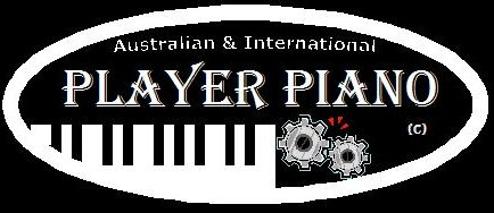
Just a few words of advice to anyone planning to buy a player to restore. These are my opinions:
If it is your first player restoration, don't buy a reproducing player, leave that go until you have successfully restored several standard 88 noters. There are too few of these spectacular players left, they are complex and must be re-built to a standard that I can comfortably state would be beyond the capacity of a first timer. If you must have one, say a Duo-art, Ampico, Welte etc. buy it restored or have a professional restore it for you.
As I am a collector of Gulbransen, you may think the following advice a little odd: avoid them, they are a difficult action to properly restore, and may result in dissapointment for the novice. Certainly don't buy a Gulbransen with a glued stack. You can tell the glued stack by the lack of screws in front of the stack. The screwed stack (which is easier to restore) has 164 screws holding it's unit pneumatics to the board.
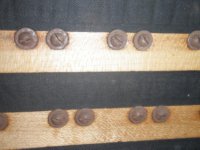
Hupfeld actions, while relatively easy to restore, employ a system of small pillow or envelope type pouches, that require great dexterity to duplicate if necessary.
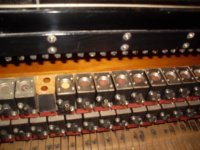
Shultz actions are to be avoided, they are difficult to rebuild, require certain fine leathers and I believe, too fiddley for the beginner.
The best results and the easiest to start with, in my opinion, are Auto-piano and Standard. Almost identical these two stacks are easy to dissasemble, easy to understand, and if you are careful, will give wonderful results and can be an excellent confidence booster.
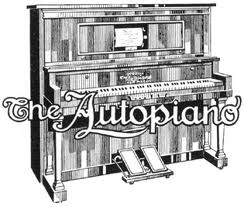
Be aware of the pitfalls of buying instruments from auction sites. It is a fact that you can get some allmighty player pianos at excellent prices, but there are also some worn out, near unrestorable units offered for sale. Many sellers have no idea of the true monetary value of a 1920's unrestored player piano and offer them at starting prices of thousands of dollars, for an item that really isn't worth more than fifty dollars. On the opposing side, sellers often offer high quality recently restored players, for maybe a couple of hundred dollars, simply to free up space in their homes.
Be discerning, learn as much as you can before purchase, and have an idea of what you would like to have, set a budget taking restoration into account, and stick to it. Many many player pianos are offered for sale daily in printed and electronic media, so you don't need to buy the first one that comes along. You may find one simply by letting it be known that you are looking for one. One of the finest Autopiano players that I have owned was found in this way and it cost a grand total of fifty dollars. If you are planning to restore it yourself, allow a budget of a minimum eight hundred dollars for materials (over and above the purchase price), Unless it is a rare and valuable model, no unrestored upright player piano from the 1920's, in my opinion, is worth more than one hundred and fiftly dollars. You can expect to pay much more for an unrestored reproducing unit.
It is not terribly difficult to restore the player action in a standard 88 note player, but if the piano action or major component of the piano is worn out, you are looking at literally hundreds or thousands of dollars to restore; strings, soundboard, pinblocks, hammers etc etc. For example; a set of new strings for an upright piano is approximately six hundred dollars for quality copper wound bass and quality mid range and treble. A grand piano is double that at the least. Hammers may be purchased for an upright, pre drilled at around 250 to 450 dollars a set, depending upon weight and quality. You can be sure the dampers, back checks and other associated parts will also need replacement.
Importantly, bear in mind that the player that plays well before sale, may not have been in use for quite some time and will quickly break down under the onslaught of a new and enthusiastic owner.
Not by any stretch totally negative, you can indeed pick up a good solid player with none of these faults or problems, just look carefully, and do your research. Buying a player piano as an investment, is a bad investment, these are beasts that deteriorate over time and as such will drop in value until they are next restored and the depreciation cycle starts again. They were made to entertain and be enjoyed, this is the true value, and makes each and every restorable player piano, in artistic and entertainment terms..... priceless.
Most important: check the piano itself before purchase. If you are unsure, have a piano technician accompany you to inspect the piano action, soundboard, pin blocks, etc etc. There is no point buying a player piano to restore if the piano itself has major faults that will be costly to repair, remember: the player is only as good as the piano it plays.
(c) 2011.All rights on the above texts reserved
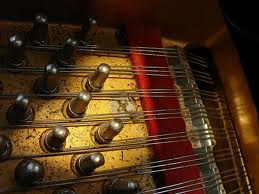
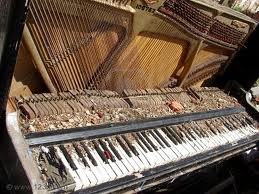
Electrifying your player
Many people aim to electrify their players with after market suction units. While these can be of value, nothing beats the expressive control of the player, by your feet, when pumping at varying speeds through a roll, as is appropriate to gain an excellent musical result.
Of course many players were sold including an electric suction unit, usually expression and reproducing, that really require electric pumps in order to work properly and impart their own expression to each properly coded roll. Some are a combination electric and foot, and these are fine players indeed.
The pumping of a properly performing foot pumper should be extremely easy and require very little effort, that enables you to play away the hours, without feeling like you just scaled the Empire State Building via its stairwells. If it is a workout, something is wrong. It can be holes in the extractors or reservoir, faulty flap valves, faulty or rotten valve or pouch leather, all these faults combined and many other causes.
Fortunately most of these problems may be tackled easily by the layperson, rendering an addition of an electric suction unit, redundant.
Oh and by the way, the last two winners of the Empire State Building stair run, were Australian :)
Quality Issues
Very few brands of player piano could be considered to be of low quality, they start at great, and go up from there. They come from a different era, an era of high quality in workmanship and materials, this stands true even of budget priced instruments. The only differences between a standard 88 note player and a top of the range reproducing player is the extra pneumatic equipment fitted to soften [in stages] the suction value to a separated bass and treble. Of course, these can be quite intricate mechanisms and may be difficult to restore without experience, but not impossible. They still employ basic pneumatic technology, that may be easily understood by simply studying the operation of the machine and the intentions of it's designers. You may still perform exactly the same musical interpretations with a standard player, they were almost all fitted with hand controls for subduing bass and treble, plus the simplest accenting system is the two foot pedals that can be pumped artistically to produce musical effect.
Early 1900's manufacturing is not easily surpassed in quality or ingenuity.
Music Hall of the 30's on player piano.mp3